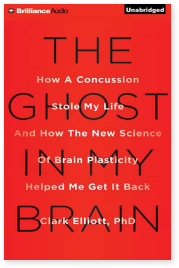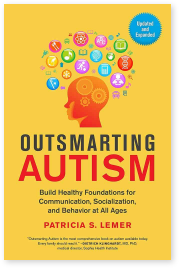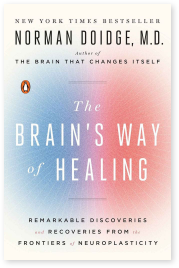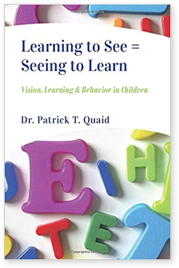Mind-Eye Symptoms Assessment
One minute of your time will help us help you.
We often find that patients have a really hard time describing their symptoms or articulating what in their environment is causing ongoing discomfort. This symptoms assessment is not meant to diagnose or treat symptoms, but to help you better identify and communicate about them so that you can ask the right questions, seek treatment, and continue down the path of improving how you interact within your environment.
Take this 15 question assessment for you or a loved one, and in the end, if you’d like to speak to a new patient advocate to learn about how we can help, you’ll be prompted to do so if that’s what you choose.
This Symptoms Assessment is for educational purposes only and in no way provides an official diagnosis. Patients would need to be seen in person for an evaluation in order to provide any type of diagnosis
Typical Eye Testing May Not
Thoroughly Assess Sensory Overload
Typical Eye Testing
May Not Thoroughly
Assess Sensory Overload
01
Make The Connection
The traditional practice of using eyeglasses simply to give a patient clearer, 20/20 eyesight is outdated. Current scientific knowledge presents the opportunity for prescription eyeglasses to be selectively designed to alter sensory integration, including auditory function and body biochemistry, and affect learning disabilities, autism, symptoms of concussion and many other neurological impairments.
02
Changing Perspectives
Mental health disorders have reached a crisis level in the world, including the United States, and are as much related to retinal sensitivities in peripheral eyesight and lack of integration between visual and auditory signals, as they are to abnormal brain activity and neurochemical imbalances. Just as changes in environmental stimuli can impact brain function and biochemistry, so, too, eyeglasses can modify environmental input to the retina and mitigate neurological issues.
03
Skillness vs Illness
Policy changes regarding screening for proper connections between eyes and ears would allow health professionals to intervene in this public health care crisis by preventing or at least reducing various mental health issues, thereby enhancing the quality of citizens’ lives (young and old), promoting better productivity of citizens, and potentially reducing health care costs by millions of dollars worldwide.
'Dr. Zelinsky Is Renowned'
Norman Doidge, M.D. & Clark Elliott, Ph.D., Dr. Patrick Quaid and Patricia S. Lemer
praise her accomplishments:

"Zelinsky fit Elliott with a series of eyeglasses designed to improve the perceptual damage that made his life so difficult... Getting fitted for Zelinsky's eyeglasses is like no eye appointment you've ever had... Now, Elliott says, he is almost entirely symptom-free, able to problem-solve, multi-task and find his way easily — all abilities he lost in the auto accident in 1999. When he put on his Phase VI glasses he felt something that he hadn't felt for years: "I felt normal."
Review: 'The Ghost in My Brain'
The Chicago Tribune

"One brilliant Chicago-area optometrist I know, Deborah Zelinsky OD, FNORA, FCOVD, has developed a unique, patented, easy-to-administer evaluation called the Z-Bell Test. This test measures the efficiency of integration between visual processing and listening....A 2014 study at Vanderbilt University found that children with autism do not synchronize their seeing and hearing...I have watched Dr. Zelinsky administer this test to disbelieving colleagues, who were astounded by its accuracy and results...Over the past two decades, The Z-Bell Test has become internationally recognized by the scientific community.”
Patricia S. Lemer,
Licensed Professional Counselor (LPC)

"I visited Dr. Zelinsky, and she showed me how she can use optical lenses to alter sensory filtering, by directing light to different retinal cells and brain circuits. This can influence activity in the brain and the hypothalamus to better regulate body chemistry, sensory integration, and even some auditory processing. [Dr. Zelinsky] works frequently with patients working with learning and cognitive disorders as well as TBIs."
Norman Doidge, M.D.

"I was delighted to have Dr. Zelinsky personally contribute to the book. Her wealth of knowledge in the area of visual development and visual processing is widely known, not just through her contribution of eye-care to the author of “The Ghost in My Brain”, but also via her Mind-Eye Institute and the lectures and training their provide. Dr. Zelinsky is not just colleague and a friend, but also a valued member of the neuro-optometric community and an invaluable bridge to other allied professions treating brain injuries. Her contribution to the book is deeply appreciated."
